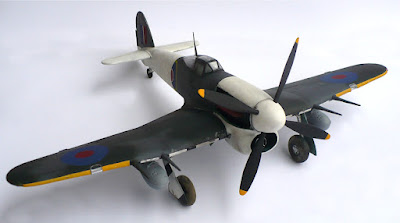This is another of Revell's prepainted kits that of course had to be completely repainted.
The only thing I didn't repaint was the stand and the little pilot figures.
From Wookiepedia"
The Nu-class attack shuttle was a vessel used by the Grand Army of the Republic during the Clone Wars.
The Nu-class was a faster, long-range supplementary design to the standard LAAT gunship line, and shared similar design characteristics to the NR2 gully jumper of the Great Galactic War. The class had heavier armor and shielding than most atmospheric craft. However, the LAAT/i remained somewhat competitive with the Nu: while the shuttle could only carry 30 Clone troopers, the LAAT/i could carry that and four speeder bikes in addition. The shuttle also lacked the missile launchers of the LAAT/i. As a result, it wasn't a complete replacement for the affectionately nicknamed "larty". It was designed with fold-down wings, similar to fighters like the V-19 Torrent and later shuttle designs like the Theta-class and Lambda-class. Its boarding hatch was located at the front of the shuttle, in what could be described as the vessel's "chin". It would also appear to have been equipped with some form of tractor beam or holding clamp; as used to carry Anakin Skywalker's escape pod after he had crashed the Defender into the command ship of the separatist blockade over the planet Ryloth.
A shuttle of this kind delivered Ahsoka Tano to Christophsis during a heavy battle there. Commander Cody and Captain Rex flew the Nu-class shuttle Obex as a transport while conducting an inspection tour of Republic outposts staffed with rookie troops. When they landed at the listening post on the Rishi moon, their shuttle was destroyed by Confederacy droid commandos.
Another Nu-class shuttle delivered Nahdar Vebb and a small squad of clone troopers to the third moon of Vassek during the mission to recapture Nute Gunray. After stumbling into General Grievous's castle, Jedi Master Kit Fisto ordered the clones to call in for reinforcements using the shuttle's transceiver, but it was destroyed by MagnaGuards.
A Nu-class shuttle was used on a diplomatic mission by Commander CC-5869, his troops, Jar Jar Binks, and Senator Kharrus, who were en route to Florrum to the Weequay pirates' lair with a bounty of spice on board as a ransom for Dooku. While entering Florrum's atmosphere, they were shot down by the pirates. Kharrus died in the crash along with the two pilots. The shuttle was unable to take off again because it was broken in two.
A Nu-class shuttle was used to transport Anakin Skywalker's escape pod after he destroyed the leading ship blockading Ryloth with the Defender.
At least one escort shuttle fell into the hands of the Imperial splinter faction known as the "hard-liners" stationed on the planetoid RZ7-6113-23. The shuttle was stolen by the bounty hunter Kir Kanos during his escape from the hard-liners' ship storehouse.






































